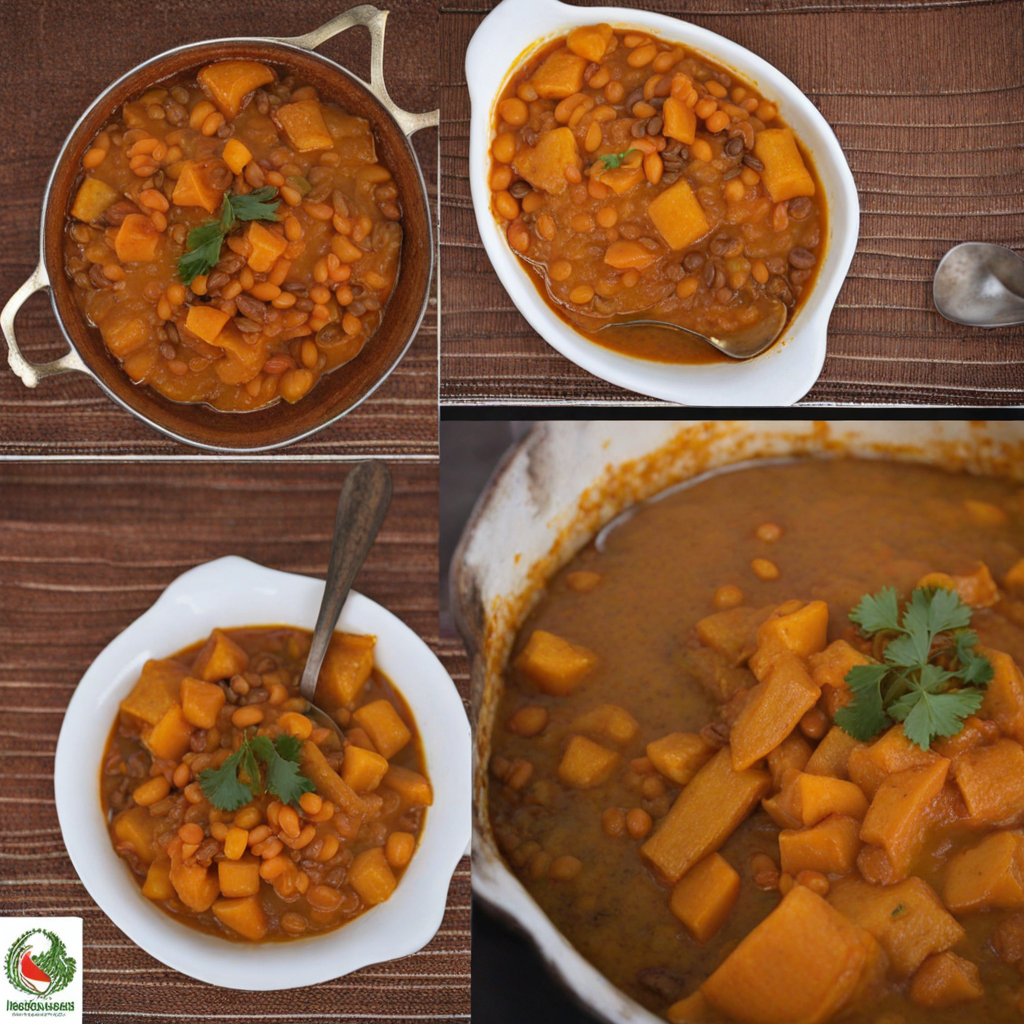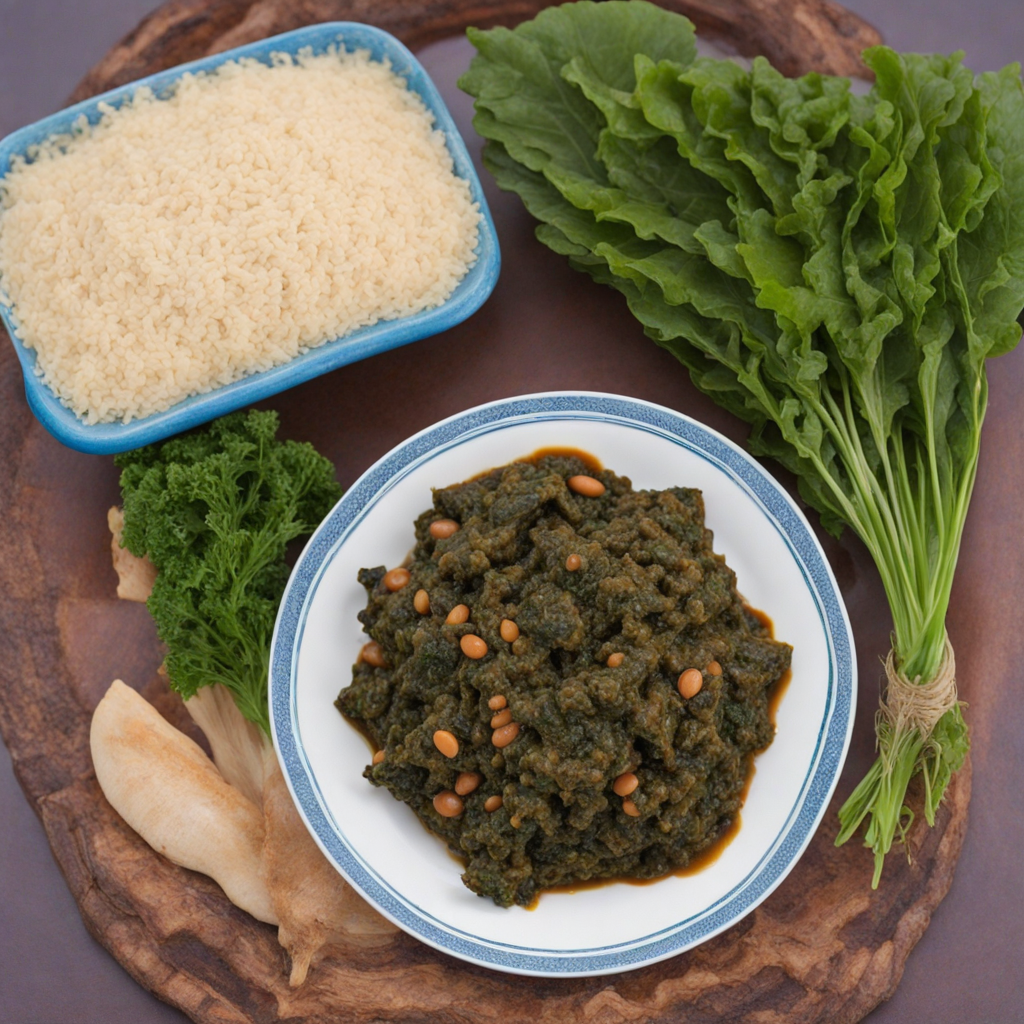Ibihaza
Ibihaza is a traditional Rwandan dish that showcases the rich agricultural heritage of the region, primarily using pumpkin as its star ingredient. The dish is often prepared by cooking pieces of pumpkin until they are soft and tender, then mashing them to create a smooth, creamy texture. The natural sweetness of the pumpkin is complemented by a medley of local spices and seasonings, which enhances its flavor profile. This simple yet hearty dish is often served as a side, accompanying various meats or stews, making it a versatile addition to any meal. In addition to pumpkin, Ibihaza may include other ingredients such as beans or maize, which not only add to the nutritional value but also contribute an array of flavors and textures. The combination of these elements makes Ibihaza a filling and satisfying dish that reflects the agricultural bounty of Rwanda. The preparation process is often communal, with families coming together to cook and enjoy the flavors of their homeland, fostering a sense of community and tradition. For those looking to explore new culinary experiences, Ibihaza offers a delightful glimpse into Rwandan cuisine. Its unique taste, which balances sweetness with savory notes, can be an exciting addition to any food lover's palate. Whether enjoyed at a local eatery or made at home, Ibihaza invites you to savor the essence of Rwandan culture through its inviting flavors and wholesome ingredients.
How It Became This Dish
The Rich History of Ibihaza: A Culinary Gem from Rwanda #### Origins Ibihaza, a traditional dish from Rwanda, is a vibrant and nutritious pumpkin stew that embodies the agricultural heritage and culinary practices of the Rwandan people. The name "Ibihaza" translates to "pumpkin" in Kinyarwanda, underscoring its primary ingredient. The origins of Ibihaza can be traced back to the lush, fertile lands of Rwanda, where pumpkin cultivation has been a staple since the early agricultural practices of the region. Pumpkins, along with beans and maize, were among the earliest crops cultivated by the Bantu tribes who migrated to the area around 1000 AD. These crops were integral to the subsistence farming practices that shaped Rwandan society. Over time, pumpkin varieties were selectively bred for both flavor and resilience, leading to the diverse forms of Ibihaza we see today. The dish often incorporates not just the flesh of the pumpkin but also its seeds, which are roasted and ground to enhance flavor and add nutritional value. #### Cultural Significance Ibihaza is not merely a dish; it is a symbol of Rwandan culture and identity. In Rwandan households, especially in rural areas, the preparation and sharing of Ibihaza reflect communal values and familial bonds. Traditionally, the dish is served during significant occasions, such as harvest festivals, weddings, and communal gatherings. It is seen as a way of honoring the earth and celebrating the fruits of labor. In Rwandan culture, pumpkins are also associated with prosperity and fertility. They are often used in rituals and ceremonies to invoke blessings for a bountiful harvest. The act of cooking Ibihaza, therefore, transcends mere nourishment; it becomes a spiritual practice, connecting the community to their ancestors and the land. Moreover, the dish plays a crucial role in Rwandan cuisine, which emphasizes the use of locally sourced and seasonal ingredients. The use of pumpkins in Ibihaza reflects the country's agricultural diversity and the importance of sustainable food practices. By using ingredients that are readily available, Rwandans not only support their local economy but also promote environmental health. #### Ingredients and Preparation Ibihaza is typically prepared using a combination of pumpkin, beans, and sometimes corn, simmered together with onions, garlic, and spices. The preparation starts with peeling and cutting the pumpkin into bite-sized pieces. The seeds are often roasted and incorporated into the dish for added texture and flavor. The cooking method varies from region to region, but the essence remains the same. Some families may opt for a more rustic approach by cooking the pumpkin and beans in a clay pot over an open fire, which imbues the dish with a smoky flavor. Others may prepare it on a modern stovetop, allowing for a quicker cooking time while still preserving the traditional flavors. A common variation of the dish includes the use of coconut milk or groundnut paste, which adds richness and depth. The inclusion of green leafy vegetables, such as amaranth or pumpkin leaves, enhances both the nutritional profile and the vibrancy of the dish. #### Development Over Time The historical development of Ibihaza is closely linked to the socio-political changes in Rwanda. The 1994 genocide against the Tutsi had a profound impact on Rwandan society, leading to a significant transformation in agricultural practices and food security. In the aftermath, there was a concerted effort to revive traditional farming methods and promote indigenous crops, including pumpkins. Organizations dedicated to food security and nutrition have recognized the importance of Ibihaza as a source of sustenance and cultural heritage. Initiatives aimed at promoting traditional dishes have emerged, emphasizing the nutritional benefits of locally sourced ingredients. This resurgence is not only about preserving culinary traditions but also about addressing health issues related to malnutrition. In contemporary Rwanda, Ibihaza has found its way into urban markets and restaurants, where chefs are reimagining the dish with modern twists. While traditional recipes are still cherished, innovative approaches are being explored, incorporating global influences and fusion elements. This evolution reflects the dynamic nature of cuisine and its ability to adapt to changing palates and lifestyles. #### Ibihaza in Modern Rwandan Society Today, Ibihaza remains a beloved dish in Rwanda, cherished by both locals and visitors. Its presence in homes and restaurants serves as a reminder of the rich agricultural heritage that defines Rwandan culture. Efforts to educate younger generations about traditional foods and sustainable farming practices are crucial in maintaining the cultural significance of dishes like Ibihaza. As Rwandans continue to navigate the complexities of modern life, the preparation and sharing of Ibihaza have become a way to reconnect with roots and celebrate the resilience of the community. Cooking and sharing meals become acts of solidarity, fostering a sense of belonging and continuity in a rapidly changing world. Moreover, Ibihaza has found a place in the broader narrative of African cuisine on the global stage. With the increasing interest in ethnic foods and farm-to-table movements, dishes like Ibihaza are being embraced for their nutritional benefits and cultural stories. This growing appreciation has encouraged Rwandan chefs and food enthusiasts to share their culinary treasures, elevating Ibihaza beyond its traditional boundaries. #### Conclusion Ibihaza is more than just a dish; it is a tapestry woven with the threads of history, culture, and community. From its ancient origins in Rwandan agriculture to its contemporary iterations in urban settings, Ibihaza encapsulates the spirit of Rwanda. As it continues to evolve, the dish remains a vital link to the past, a celebration of resilience, and a symbol of the rich culinary heritage that defines Rwanda. Embracing Ibihaza not only nourishes the body but also honors the stories and traditions that have shaped the Rwandan identity for generations.
You may like
Discover local flavors from Rwanda







